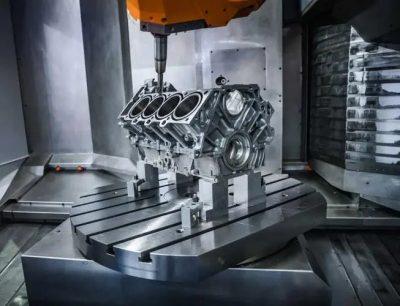CNC machining unlocks a spectrum of surface finishes for stainless steel parts, allowing you to achieve the desired visual and functional properties. Here's a breakdown of the most common finishes obtainable through CNC machining:
Machined Finishes
- As-Machined: This is the raw surface left behind directly after the CNC machining process. It will have visible tool marks and machining lines, resulting in a matte and slightly rough texture. This finish is suitable for applications where functionality is prioritized over aesthetics, or where the part will be hidden during assembly.
- Smooth Machined: This finish involves a light secondary machining pass to smoothen the surface left behind by the initial machining process. Tool marks become less pronounced, resulting in a smoother and more visually appealing surface that still retains a slightly matte appearance. This finish is a good balance between functionality and aesthetics and is suitable for many applications.
Polished Finishes
- Satin Finish: A polishing process removes tool marks and creates a smooth, reflective surface with a subtle directional grain. This finish offers a more polished look compared to a smooth machined finish, while still maintaining a slight sheen. It is a popular choice for applications where a balance between aesthetics and hiding minor imperfections is desired.
- Mirror Finish:This is the most reflective finish achievable, achieved through a multi-stage polishing process. The surface becomes highly reflective, like a mirror, with no visible tool marks or imperfections. This finish is ideal for decorative parts or applications requiring a high degree of visual appeal.
Other Finishes
- Bead Blasting: This process involves blasting the surface with small beads to create a matte, textured finish. This finish can help hide minor imperfections and improve grip. It is often used for industrial parts or applications where a non-slip surface is desired.
- Brushing: A brushing process utilizes a wire brush to create a uniform, directional brushed pattern on the surface. This finish can add a decorative touch and help hide minor scratches. It is commonly used for architectural elements, appliance parts, and other applications where a brushed metal look is preferred.
Factors Affecting Surface Finish
- Material Grade: The specific grade of stainless steel can influence the achievable surface finish. Some grades might be more challenging to polish to a mirror finish due to their composition.
- Machining Parameters: The chosen CNC machining parameters, such as feed rate and cutting speed, can affect the surface finish. Slower speeds and finer tools will generally result in a smoother finish.
- Post-Machining Processes:The type and intensity of post-machining processes like polishing or bead blasting will significantly impact the final surface finish.
Not only are the surface finishes achievable with CNC machining stainless steel, but also what are the typical CNC machining methods used for stainless steel I think you will be interested.
